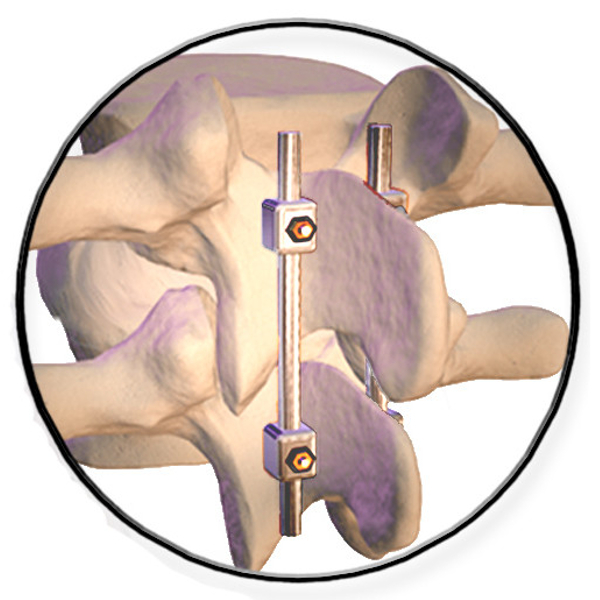Spinal fusion is a common type of spine surgery. It involves fusing two or three vertebrae together so they cannot move. If the source of the patient's back pain is based in movement or micro-movements, stabilizing the affected area through spinal fusion can be an effective way to eliminate pain. In addition, spinal fusion may be used to stabilize the spine following an injury or another surgery.
There are a number of medical conditions which can cause back pain which may be alleviated by spinal fusion, including:
- Spondylolisthesis, or slippage of the spine bones
- Scoliosis, or curvature of the spine
- Degenerative spine conditions, such as degenerative disc disease, in which the discs that cushion the vertebrae wear down
- A herniated disc, or when a disc is compressed so badly that the gel-like substance inside spills out
- Spinal stenosis
- Traumatic spine injuries, such as fractures
This procedure is most often performed on the lumbar (lower) or cervical (upper) spine.
Medical treatment options
Spinal fusion involves using a bone graft to cause two or more vertebrae to grow together.
If there is a damaged disc or injured bone causing the pain, this procedure may be combined with a laminectomy or a discectomy, in which surgeon removes all or part of the damaged tissue. They may stabilize the vertebrae using metal instruments such as plates, rods, screws or a cage to hold them in place while the bone heals.
The surgeon will usually use a bone graft from another part of your body, either alone or in combination with the instrumentation, to make sure the vertebrae stay in place. They will take a piece of bone, usually from the pelvis, and place it in the surgical site. This serves as a source of cells to help stimulate bone growth and initiate the fusion process.
Despite the name, the fusion does not occur during the surgery itself – the surgeon simply creates conditions for the bones to fuse together on their own. This process takes between 6 and 18 months after surgery to complete.
Although this operation immobilizes certain parts of the spine, the patient generally does not experience any reduced mobility afterwards – sometimes they even experience increased mobility because they are not in pain anymore.
Who is a good candidate for spinal fusion?
Bone growth is an essential part of this medical treatment. There are several factors that may inhibit or prevent healthy bone growth, including smoking, having osteoporosis, vascular disease, obesity, diabetes, renal disease or alcoholism. If this is the case, a doctor may prescribe medication or a device to promote bone growth.
Advantages and disadvantages of spinal fusion
Spinal fusion can be an effective way to relieve back and leg pain for patients for whom conservative treatment methods do not work.
This type of surgery changes the anatomy, so if the pain is not due to an anatomical abnormality, it will not help.
The most common risk with spinal fusion surgery is that it may fail to alleviate the pain. Be sure to thoroughly discuss with your physician if spinal fusion is the best option for you. Other possible risks include failure of the bone to fuse (pseudoarthrosis), migration of the instrumentation or loosening of the screws, infection and nerve damage.
How we can help
Premier Healthcare has extensive experience with guiding patients towards high-quality German hospitals and medical specialists to help them receive excellent quality care. In Germany, it is common for specialists such as spine surgeons to work together in multidisciplinary teams to provide comprehensive patient care. Different specialists use their unique knowledge to determine the cause of the symptoms, a necessary step to ensure effective treatment.
Premier Healthcare has a close relationship with several spine specialists throughout Germany. Contact us for more information on spinal surgery in Germany.

